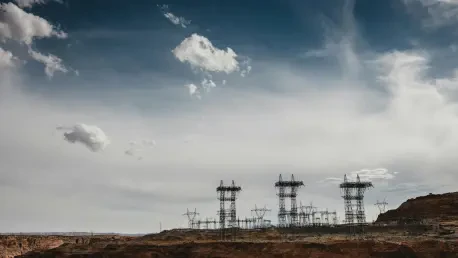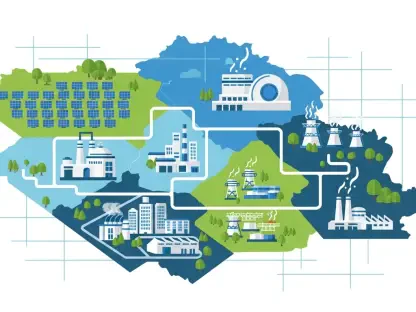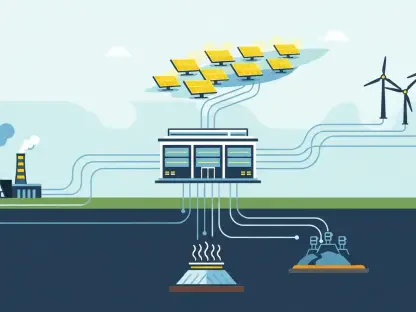I’m thrilled to sit down with Christopher Hailstone, a seasoned expert in energy management and renewable energy, whose deep knowledge of electricity delivery and grid reliability offers a unique perspective on the evolving landscape of utility policy in the United States. With Arizona regulators recently voting to begin repealing the state’s Renewable Energy Standard and Tariff (REST) rules, we dive into a conversation about the implications of this decision, the balance between cost and sustainability, and the future of clean energy in a rapidly growing state like Arizona. Our discussion touches on the original intent behind the REST rules, the debate over energy costs, the shift in utility goals toward carbon neutrality, and the potential impact on businesses and consumers alike.
Can you walk us through what the Renewable Energy Standard and Tariff (REST) rules are and why Arizona put them in place back in 2006?
Absolutely. The REST rules were established by the Arizona Corporation Commission in 2006 with the goal of pushing electric utilities to incorporate more renewable energy into their portfolios. Specifically, they mandated that utilities achieve 15% renewable energy in 2025. The idea was to reduce reliance on fossil fuels, combat climate change, and diversify Arizona’s energy mix by promoting sources like solar and wind. At the time, renewables weren’t as cost-competitive as they are today, so this policy provided a clear target and incentive for utilities to invest in cleaner technologies, while also ensuring a predictable framework for growth in the sector.
Why do regulators feel it’s time to repeal the REST rules now, especially since major utilities have already exceeded the 15% renewable energy target?
Regulators argue that since utilities like Arizona Public Service and Tucson Electric Power have surpassed the 15% goal—hitting 19% and 29% respectively in 2024—the mandate has essentially outlived its purpose. Their perspective is that the market has matured, and renewables are now a significant part of the energy mix without needing a government-imposed standard. They also believe that continuing the rules creates unnecessary constraints on utilities, limiting their ability to adapt to changing technologies and market conditions, which could be more efficiently managed without regulatory oversight.
How are regulators connecting the REST rules to higher energy costs for Arizona customers?
The Arizona Corporation Commission has pointed to a hefty price tag, estimating that the REST rules have added about $2.3 billion to customer bills since 2006. Their argument is that the mandated shift to renewables, especially in the early years when technologies like solar were more expensive, forced utilities to pass on those higher costs to consumers. This includes investments in infrastructure, subsidies, and tariffs designed to support renewable projects. For the average household, this might mean incremental increases in monthly bills over time, though the exact impact varies based on usage and utility pricing structures.
What’s behind the push from some regulators for utilities to have more freedom in choosing their energy mix without these government mandates?
The core reasoning, as voiced by some regulators, is flexibility. They believe utilities are better positioned to determine the most cost-effective and reliable energy mix for their customers without being tied to specific renewable targets. This allows them to weigh options like natural gas, nuclear, or emerging technologies against renewables based on real-time costs, grid needs, and reliability concerns. The idea is that market-driven decisions, rather than regulatory mandates, will ultimately lead to lower costs and more efficient service, especially in a state with unique energy demands like Arizona.
How do you address concerns from clean energy advocates who insist the REST rules are still vital, especially with Arizona’s growing population and energy needs?
Clean energy advocates have a strong point when they highlight Arizona’s rapid growth and rising electricity demand. They argue that without a standard like REST, there’s a risk utilities might backslide on renewable investments, especially if short-term cost pressures push them toward cheaper fossil fuels. With new peak demand records being set, maintaining a policy framework that ensures a steady increase in clean energy could be crucial for long-term sustainability and meeting climate goals. I think the concern is less about utilities abandoning renewables entirely and more about losing the momentum and certainty that a mandate provides for future planning.
Can you explain the shift by Arizona Public Service from a ‘zero-carbon’ to a ‘carbon-neutral’ goal by 2050, and what that means for their strategy?
Sure. APS’s original ‘zero-carbon’ goal implied completely eliminating carbon emissions from their energy production by 2050, which is a very ambitious target. Moving to ‘carbon-neutral’ means they’re aiming to balance any emissions they produce with offsets or reductions elsewhere, rather than eliminating them outright. This shift reflects a more pragmatic approach, acknowledging that some carbon-emitting resources, like natural gas, might still be needed for reliability. It allows APS to focus on reducing emissions through renewables and technologies like battery storage while using offsets or other measures to neutralize the remaining footprint.
With Arizona’s utilities hitting new peak demand records, how can regulators and utilities ensure energy needs are met if the REST rules are repealed?
Meeting rising demand without the REST rules will likely involve a balanced approach. Utilities are already planning significant investments in clean energy—APS, for instance, aims to have over 10 gigawatts of solar, wind, and battery storage by 2028. At the same time, they’ll rely on a mix of nuclear, natural gas, and even coal in the near term to ensure grid reliability during peak times. Regulators will need to work closely with utilities to monitor demand trends and encourage innovation, possibly through incentives rather than mandates, to keep the growth of renewables on track while addressing immediate capacity needs.
What are clean energy advocates saying about the benefits of maintaining the REST rules, and what risks do they see in repealing them?
Advocates argue that the REST rules have created a stable environment for renewable energy growth, particularly solar, which has become one of the cheapest power sources in Arizona. They point to direct benefits for residents, like job creation in the solar industry and reduced long-term energy costs as technology scales. The risk they see in repealing the rules is a potential slowdown in solar investment, which could hurt ratepayers already struggling with bills and send a negative signal to businesses looking to invest in Arizona’s clean energy economy. They worry it might undermine confidence in the state’s commitment to sustainability.
Looking ahead, what is your forecast for the future of renewable energy policy in Arizona if the REST rules are repealed?
I think the future of renewable energy in Arizona will hinge on how utilities and regulators collaborate post-repeal. If the focus remains on market-driven solutions with clear incentives for clean energy, we could still see robust growth in renewables, especially given Arizona’s natural advantages for solar. However, without a binding standard, there’s a chance that short-term economic pressures could delay some projects or shift priorities to less sustainable options. My forecast is cautiously optimistic—utilities have the expertise and momentum to keep pushing renewables, but it’ll require active policy support and public engagement to ensure that growth doesn’t stall in the face of competing demands.









